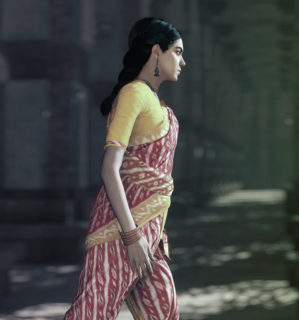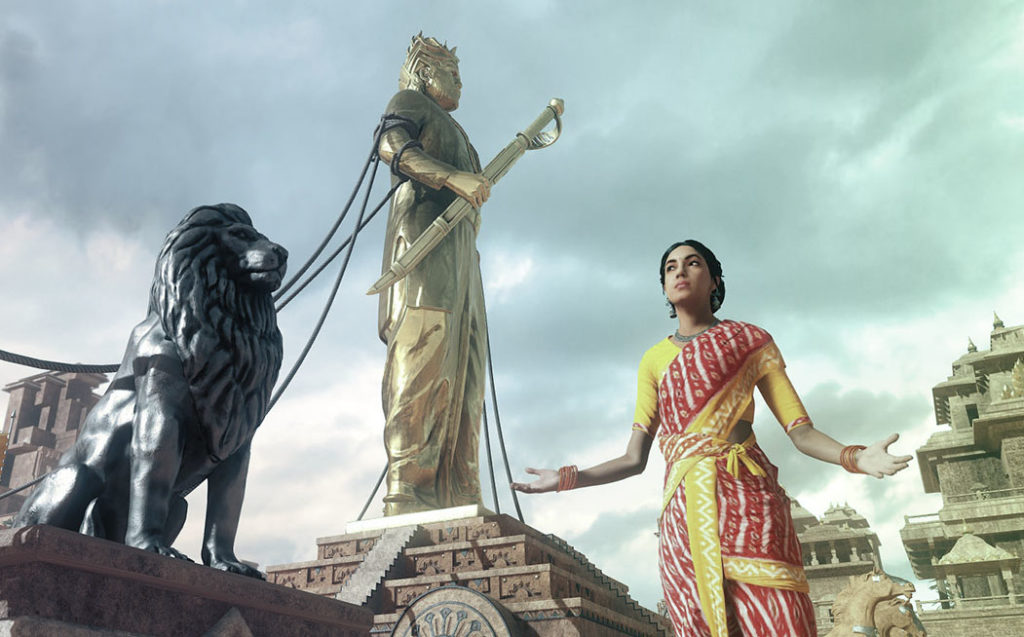AMD is growing its presence in the movie industry, particularly with virtual reality promotions. Last year, it partnered with Alienware, Fox Innovation Lab and Practical Magic to promote the movie Assassin’s Creed with a five-minute virtual reality experience. This year, the computer hardware company is gradually launching its line of super-powerful Ryzen processors along with the Radeon 500 series of video cards, and it’s looking to show off their capabilities with some extreme projects. In comes a massive-sized movie from India called Baahubali 2: The Conclusion to fill that need.
Baahubali (which translates to “The One with Strong Arms”) is an epic Indian historical fiction film series written and directed by S. S. Rajamouli. As its title might indicate, Baahubali 2 is the long-awaited sequel to Baahubali: The Beginning. The movie premiered in late April and it has been breaking global box office records ever since, becoming one of the highest-grossing Indian films of all time, having brought in over $160 million US within ten days. It is almost sure to break even more records once it hits Chinese theaters later this year.
AMD helped to promote the film with a custom designed VR experience called The Sword of Baahubali, which bears little resemblance to the Assassin’s Creed VR Experience. Unlike Assassin’s Creed, which used live-action footage collected during the shooting of the movie, Baahubali uses all computer-generated graphics for its settings and characters. The elaborate experience, which was featured at events such as the Tribeca Film Festival ahead of the movie’s premiere, plays out similarly to a video game. The point-of-view switches to the first-person and users can then interact with their environments by choosing different paths or manipulating objects by gazing at them.
Daryl Sartain, director and worldwide head of virtual reality and displays at AMD’s Radeon Technologies Group (RTG), spoke with AListDaily about how AMD came to work on The Sword of Baahubali.
“AMD collaborated with ArkaMedia and the producer S. S. Rajamouli on the first Baahubali movie, then continued our engagement on this second movie,” said Sartain, explaining how the VR experience began. “As this second movie was being crafted, we discussed the opportunity to co-develop a VR experience around the same storyline. This VR experience was planned to launch with a lengthy experience across many cities in India.”
According to Sartain, AMD became involved with Baahubali because the epic scope of the movie required extreme processing power for its digital effects. “Modern movies leverage massive digital assets—rendered environments—and therefore the studios require equally massive CPU and GPU compute capability,” he said. “This is the domain in which AMD excels and is the reason for our initial collaboration.”
The experience was shown using an HTC Vive and was demoed at venues such as the Tribeca Film Festival, and Sartain said that it “received tremendous reactions to the realism and immersion,” fully demonstrating what AMD Ryzen processors and Radeon video cards are capable of.
 When asked why AMD chose to use digital characters instead of live actors, as was with the Assassin’s Creed VR Experience, Sartain explained that “the final solution is a blend of both worlds. However, digital characters provide the ability to interact with the experience.” A separate representative told AListDaily that AMD worked with Rajamouli to create the experience, and his vision for the environments were so big and vast that it had to be created digitally.
When asked why AMD chose to use digital characters instead of live actors, as was with the Assassin’s Creed VR Experience, Sartain explained that “the final solution is a blend of both worlds. However, digital characters provide the ability to interact with the experience.” A separate representative told AListDaily that AMD worked with Rajamouli to create the experience, and his vision for the environments were so big and vast that it had to be created digitally.
Sartain said that AMD is currently in discussions with various venues around the world to bring The Sword of Baahubali onto the market. Furthermore, even though The Sword of Baahubali bears some similarities to a video game, Sartain doesn’t think VR entertainment should be compared directly with video games because “they have unique value propositions to consumers.” He then added that “movies are one of the largest entertainment sectors in the world today, and we believe that VR can provide an additional value to large portions of the movie industry.”
In discussing how AMD is using VR to promote its products, Sartain said that “VR is being evaluated in almost every business and entertainment sector today. Our goal is to ensure that the experiences or tools needed for this emerging industry are tuned and ready to provide the best performance possible on our hardware.”
As VR technology continues to grow, Sartain said that he hopes to see more investment in educational and “experiential” content. “Items that are of interest to a broad base of consumers,” he clarified. In the meantime, users can embark on epic adventures with Baahubali.

